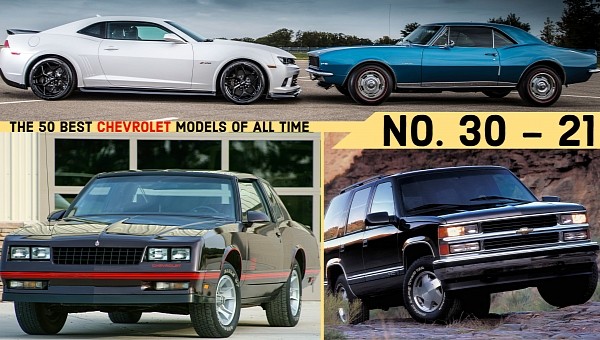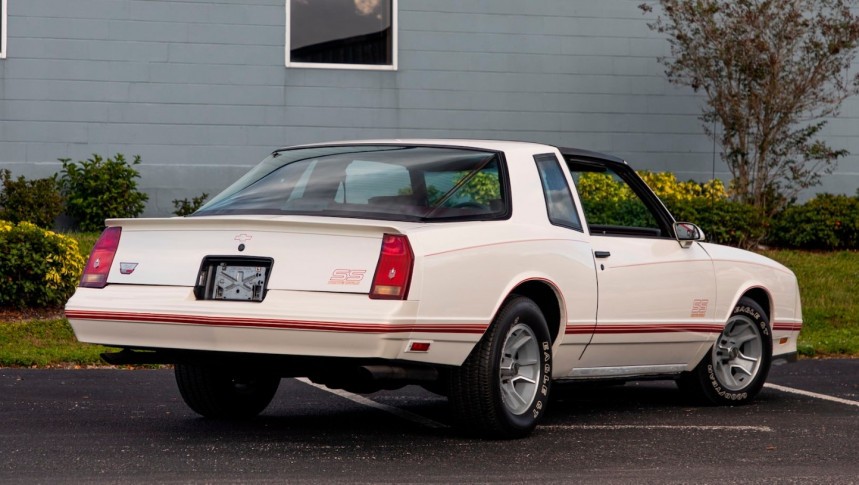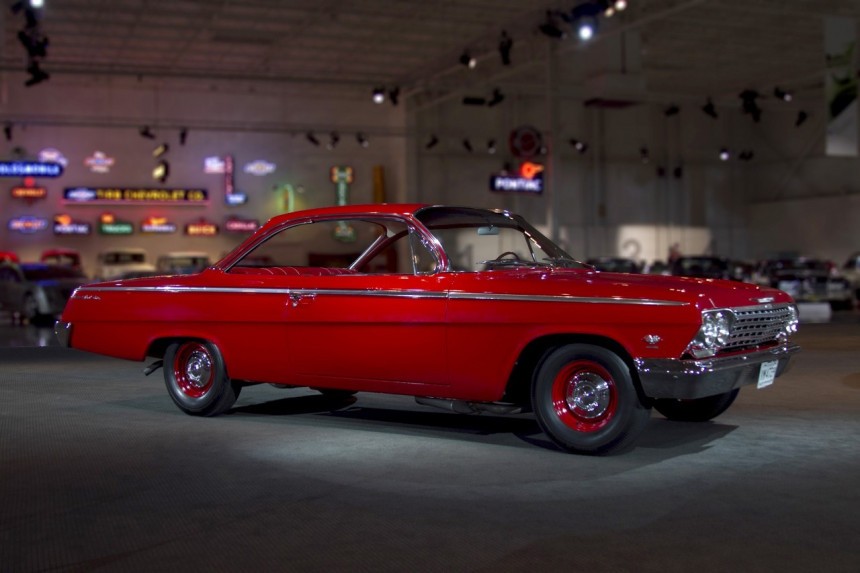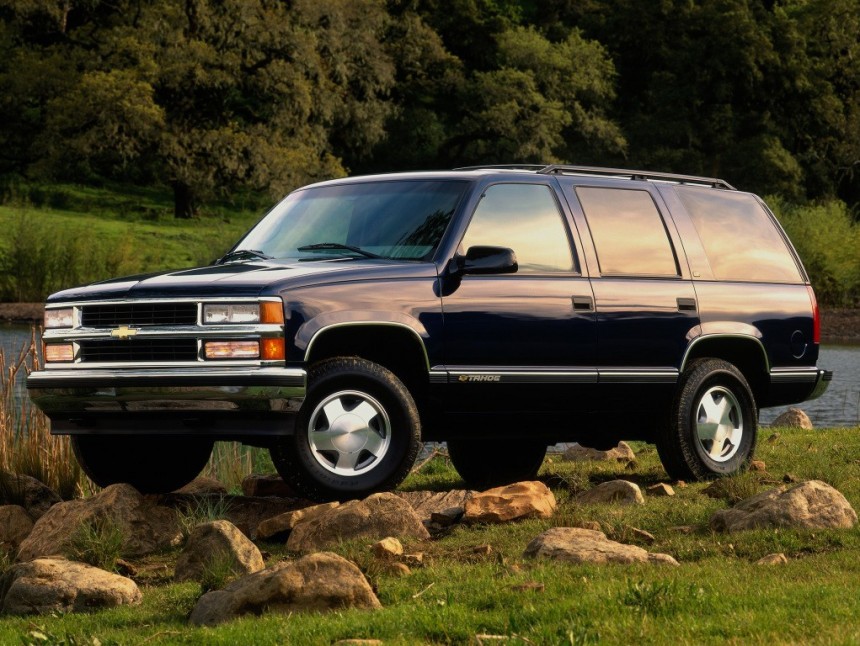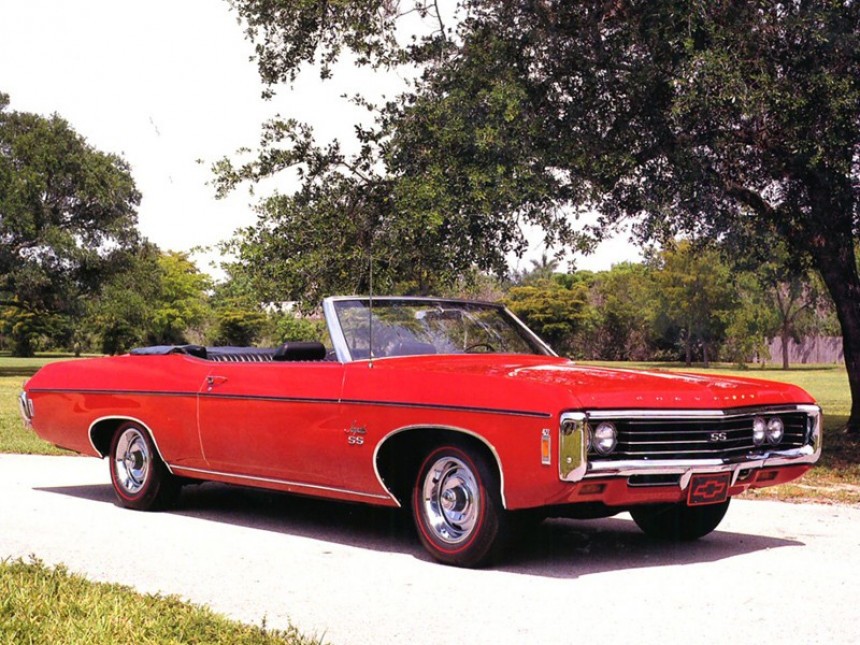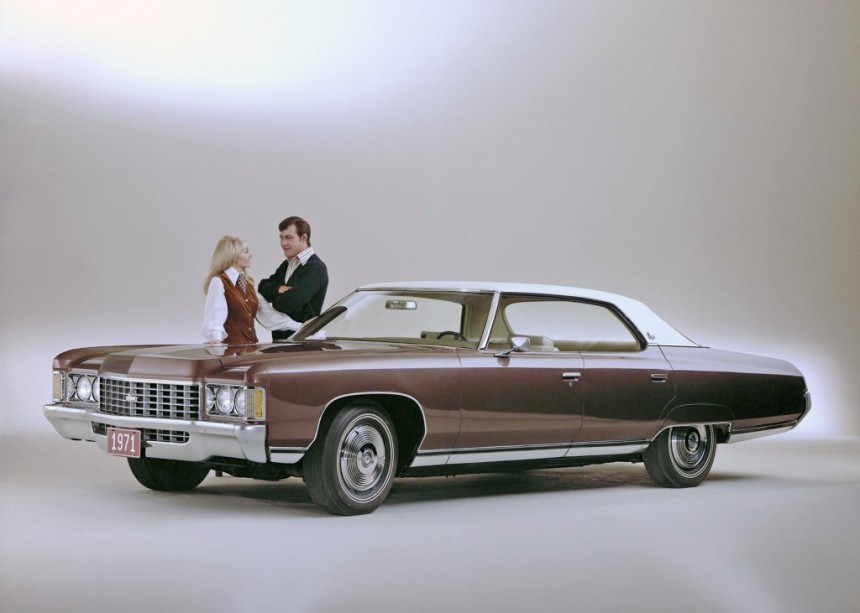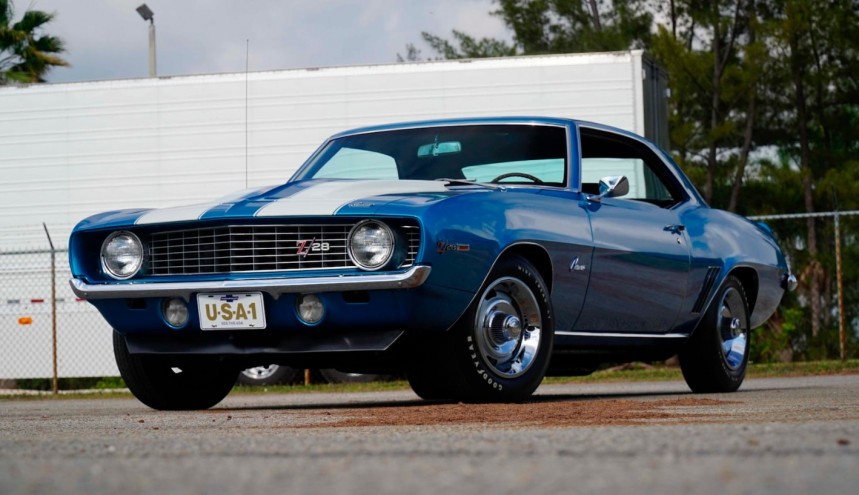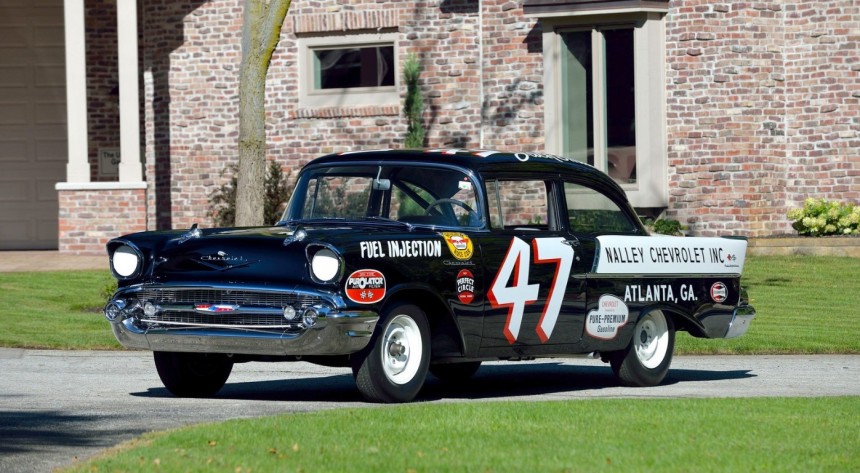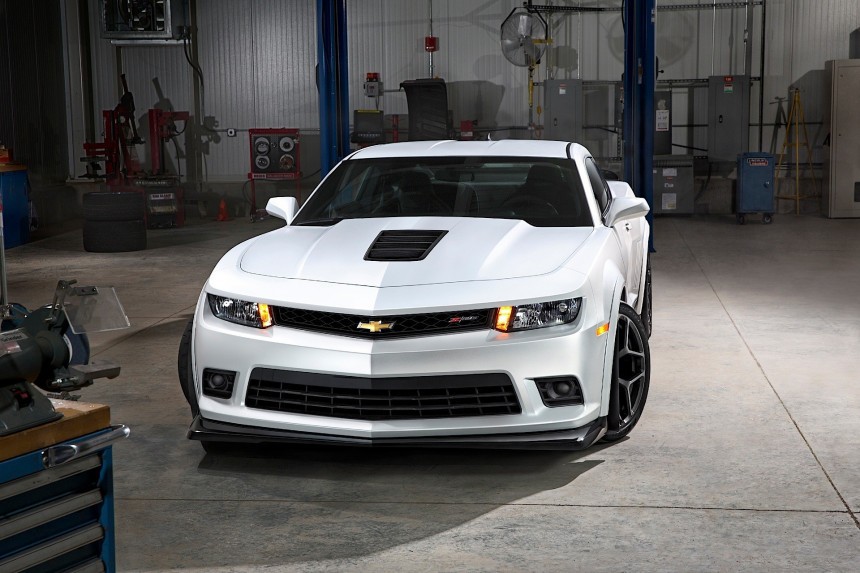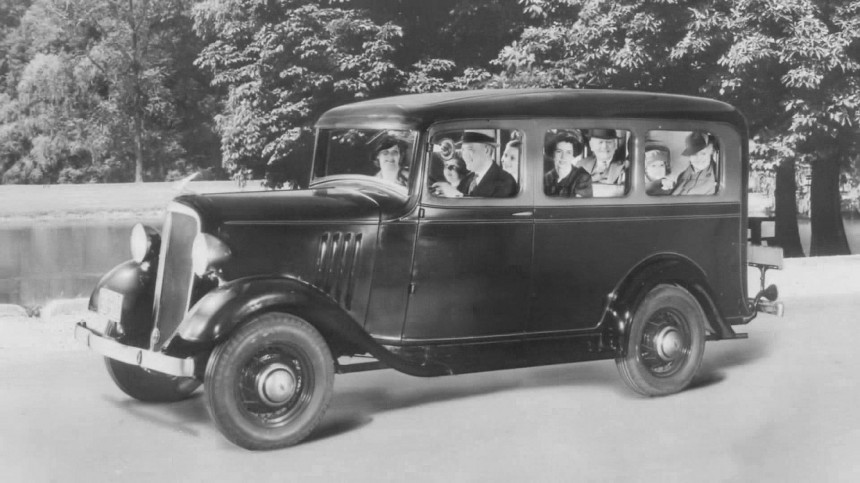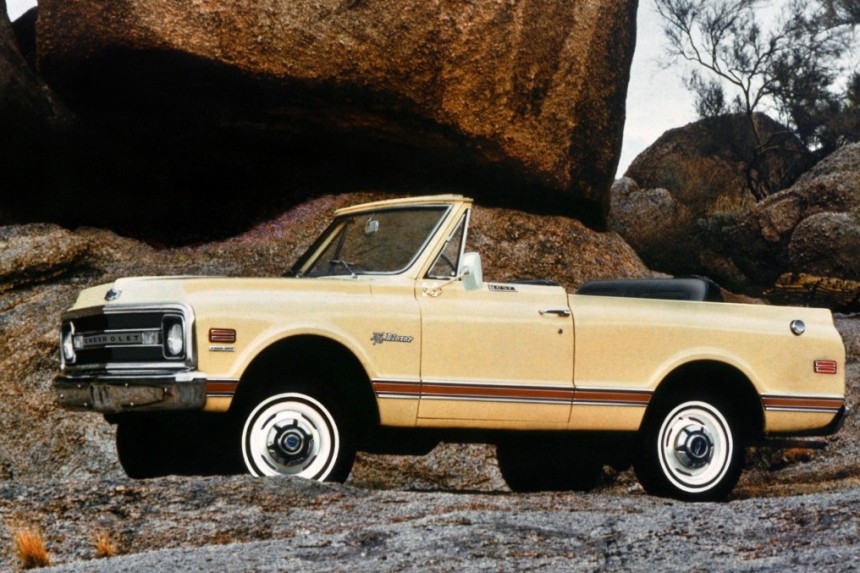Established in 1911 by brothers Louis and Arthur Chevrolet and General Motors co-founder William C. Durant, Chevrolet became GM's high-volume, entry-level car division in 1918. The brand quickly morphed into one of America's greatest automakers and then developed into a giant that builds anything from sports cars to large SUVs and trucks.
The first U.S. carmaker to mass produce a sports car, the 1953 Corvette, Chevrolet also pioneered the proto-SUV market with the 1935 Suburban. But these are only two out of tens of iconic vehicles built by the Detroit-based division. To celebrate the company that gave us so many cool automobiles, we're looking at the 50 best Chevrolets of all time. Having already explored No. 50 to 31, here's part three, which includes numbers 30 to 21.
Originally introduced in 1969 as a personal luxury car with high-performance V8 engines, the Chevrolet Monte Carlo morphed into something almost entirely different in the 1980s. Moved onto a different platform, it became smaller and boxier and the engine lineup expanded to include V6 and diesel variants too.
But while the road-going model had lost the glamour of the original Monte Carlo, the coupe remained a successful NASCAR machine. In 1986, Chevrolet revived the Monte Carlo SS after 12 years and gave it a sloping nose for improved aerodynamics. But following a narrow win over Ford in 1985, Chevy took things up a notch and created the Aerocoupe.
Fitted with a more deeply sloped rear window, a revised spoiler, and a notably shorter rear deck, it helped Chevrolet remain the company to beat in NASCAR for a few more years. To homologate it for the racing series, the company built 200 units for road use, thus creating one of the rarest and sleekest rigs of the 1980s.
29. 1961 Impala "bubble top"
Arguably one of the most beautiful Chevrolets ever made, the Impala "bubble top" came to be in 1961. That's when the GM introduced the third-generation model with the rounded glass. Unlike the four-door sedan, the two-door hardtop featured thin, sweeping A- and C-pillars with no B-pillars, which made the roof look like a bubble.
In 1962, the two-door hardtop got a convertible-style roof with thicker C-pillars, leaving the "bubble top" layout a one-year wonder. The two-door hardtop was available with all engine options Chevy offered for 1961, as well as in the then-new SS trim.
Examples fitted with the mighty 409-cubic-inch (6.7-liter) V8, rated at 360 horsepower, are among the rarest and most expensive Impalas out there since fewer than 400 were ordered with one.
28. 1994 Tahoe
After 25 years on the market, the Blazer was retired in 1994 to make room for the all-new Tahoe. Based on the GMC Yukon that had been in showrooms since 1991, the Tahoe was more than just a full-size SUV with a new face. Chevrolet also introduced a longer, four-door version for the 1996 model year.
Some 21 inches (533 mm) shorter than the Suburban but still large enough to carry a family of five in comfort, the first-generation Tahoe turned out to be what a lot of customers wanted and became a big hit. Powered by a 5.7-liter Vortec V8 good for 255 horsepower, the hauler was also offered with an off-road-oriented Z71 package.
Four generations later and the full-size SUV is still going strong alongside its longer sibling, the Suburban.
27. 1969 SS 427
No, the absence of the Impala nameplate is not a typo. Chevrolet discontinued the Impala SS for 1969 but offered an almost identical car with "SS 427" badges instead. This somewhat unknown nameplate was first launched in 1967 as RPO Z24, a bundle that included the 427-cubic-inch (7.0-liter) Turbo-Jet V8, heavy-duty suspension, and removal of all "Impala" emblems.
In 1969, the Impala SS was only available with the said Z24 option, which meant that the SS 427 effectively replaced its more iconic sibling. But while the "Impala" badges were gone, Chevrolet took things up a notch in the performance department and offered the 427 V8 with 425 horsepower in range-topping trim.
With only 2,455 units built, the 1969 SS 427 is one of the rarest high-performance Chevrolet from the late 1960s, as well as the company's most powerful Impala. Yes, it wasn't officially an Impala, but you get the gist.
26. 1971 Caprice
Originally launched in mid-1965 as a luxury trim package for the Impala four-door hardtop, the Caprice nameplate extended to include a full line of body styles in 1966.
Chevrolet first redesigned the Caprice for the 1970 model year, giving it an impressive 121.5-inch (3,086-mm) wheelbase, a more imposing appearance, and even a Cadilac-style "egg-crate" grille.
The largest Chevrolet ever built, the second-generation full-size lives on as the ultimate Caprice since the car was drastically downsized for the 1977 model year. Highly revered by Chevy enthusiasts and often regarded as a solid alternative to 1970s Cadillacs, the second-gen Caprice is also favored by the hi-riser (donk) community.
25. 1969 Camaro Z/28
Introduced only three months after the Camaro made its debut in 1966, the Z/28 was conceived by Vince Piggins to both enable the pony to compete in the SCCA Trans-Am series and to put a race-ready production car in showrooms.
Powered by a 302-cubic-inch (5.0-liter) V8 good for 290 horsepower, the Z/28 sold only 602 units in 1967 but became far more popular the next year, moving 7,199 examples. While output remained unchanged for 1969, Chevrolet introduced an optional cowl induction hood, a Hurst shifter, and a dual four-barrel cross-ram intake manifold as a dealer-installed option.
Now also a more aggressive-looking car, the Camaro Z/28 moved no fewer than 20,302 units, outselling its main rival, the then-new Ford Mustang Boss 302, by a ratio of 12 to one. The Z/28 remained a constant presence in the Camaro lineup until the sixth-generation model was introduced in 2015.
24. 1957 "Black Widow" 150
Often overshadowed by the factory-built dragsters of the 1960s, the "Black Widow" is Chevrolet's first fully-fledged performance vehicle. Developed to win NASCAR races and to promote new engine technology, it was pretty much a 1957 150 utility sedan fitted with the company's most powerful engine at the time.
Already a bare-bones version of the Tri-Five series in standard form, the 150 came without a rear bench radio, and armrests for a simple yet effective lightweight package. Power came from the 283-cubic-inch (4.6-liter) V8 equipped with Chevrolet's then-new Rochester fuel-injection system, which delivered an impressive 283 horsepower.
Put together by SEDCO, a company set up by a Chevrolet engineer with GM's blessing as a way around the AMA ban on factory-backed racing, the Black Window was built in only six units. And the cars went on to dominate the 1957 Grand National Series season despite NASCAR's early ban on fuel injection, which forced SEDCO to switch to four-barrel carburetors.
23. 2014 Camaro Z/28
Introduced in 2013 and based on the fifth-generation Camaro, the 2014 Z/28 is the latest and most exciting iteration of the iconic badge. Fitted with an advanced aero package that includes fender flares, extended rocker panels, an adjustable diffuser, and a rear spoiler, it was also delivered with Recaro seats and a flat-bottomed steering wheel as standard.
Drawing juice from a 7.0-liter LS7 V8 co-developed with Corvette Racing, the Z/28 used a Tremec TR-6060 six-speed manual transmission, a limited-slip differential, and 19-inch wheels wrapped in Pirelli P Zero Trofeo R tires. With stopping power provided by Brembo and the overall weight kept low with thinner glass and removal of sound-deadening material, the Z/28 lapped the Nurburgring four seconds quicker than the more potent ZL1.
Speaking of oomph, the 505-horsepower V8 pushes the Z/28 from 0 to 60 mph (97 kph) in only four seconds and toward a top speed of 172 mph (277 kph). With no sixth-generation version to talk about as of 2023, the fifth-gen Z/28 remains the best and most radical iteration of the nameplate.
22. 1935 Suburban
A station wagon body on a pickup truck frame, the first-generation Suburban was quite the rudimentary rig. It's also quite different from the modern Suburban we can buy today. But it's the vehicle that kickstarted the SUV segment decades before we came up with the "sport utility vehicle" moniker.
The Suburban is also the longest continuously used automobile nameplate in production as of 2023 and it's only 11 years away from celebrating a century on the market. And before you say that production was halted between 1942 and 1946 due to World War II, the wagon-bodied truck was also produced during the war as a military vehicle.
All told, this blurb is not necessarily about the first-generation Suburban as much as it is about the nameplate as a whole. Because it's been around almost as much as the Chevrolet brand itself.
21. 1969 K5 Blazer
Chevrolet's answer to the International Harvester Scout and the Ford Bronco, the original K5 Blazer arrived for the 1969 model year. While based on the second-generation C/K truck, just like the sixth-gen Suburban, the Blazer was notably shorter and sold only as a two-door with a lift-off hardtop.
Not only off-road capable, but the K5 Blazer also offered car-like luxuries that were rarely available on trucks at the time, including air conditioning and an automatic gearbox. As a result, the K5 Blazer became popular almost instantly and outsold its competitors by 1970.
Widely regarded as the vehicle that put "sport" next to "utility vehicle," the first-generation K5 Blazer got a couple of successors before the nameplate was replaced by the Tahoe in 1994. Come 2023, and the K5 Blazer is not only a desirable classic but also a popular platform for off-road-spec restomods.
30. 1986 Monte Carlo Aerocoupe
But while the road-going model had lost the glamour of the original Monte Carlo, the coupe remained a successful NASCAR machine. In 1986, Chevrolet revived the Monte Carlo SS after 12 years and gave it a sloping nose for improved aerodynamics. But following a narrow win over Ford in 1985, Chevy took things up a notch and created the Aerocoupe.
Fitted with a more deeply sloped rear window, a revised spoiler, and a notably shorter rear deck, it helped Chevrolet remain the company to beat in NASCAR for a few more years. To homologate it for the racing series, the company built 200 units for road use, thus creating one of the rarest and sleekest rigs of the 1980s.
29. 1961 Impala "bubble top"
Arguably one of the most beautiful Chevrolets ever made, the Impala "bubble top" came to be in 1961. That's when the GM introduced the third-generation model with the rounded glass. Unlike the four-door sedan, the two-door hardtop featured thin, sweeping A- and C-pillars with no B-pillars, which made the roof look like a bubble.
In 1962, the two-door hardtop got a convertible-style roof with thicker C-pillars, leaving the "bubble top" layout a one-year wonder. The two-door hardtop was available with all engine options Chevy offered for 1961, as well as in the then-new SS trim.
Examples fitted with the mighty 409-cubic-inch (6.7-liter) V8, rated at 360 horsepower, are among the rarest and most expensive Impalas out there since fewer than 400 were ordered with one.
28. 1994 Tahoe
After 25 years on the market, the Blazer was retired in 1994 to make room for the all-new Tahoe. Based on the GMC Yukon that had been in showrooms since 1991, the Tahoe was more than just a full-size SUV with a new face. Chevrolet also introduced a longer, four-door version for the 1996 model year.
Some 21 inches (533 mm) shorter than the Suburban but still large enough to carry a family of five in comfort, the first-generation Tahoe turned out to be what a lot of customers wanted and became a big hit. Powered by a 5.7-liter Vortec V8 good for 255 horsepower, the hauler was also offered with an off-road-oriented Z71 package.
Four generations later and the full-size SUV is still going strong alongside its longer sibling, the Suburban.
27. 1969 SS 427
No, the absence of the Impala nameplate is not a typo. Chevrolet discontinued the Impala SS for 1969 but offered an almost identical car with "SS 427" badges instead. This somewhat unknown nameplate was first launched in 1967 as RPO Z24, a bundle that included the 427-cubic-inch (7.0-liter) Turbo-Jet V8, heavy-duty suspension, and removal of all "Impala" emblems.
In 1969, the Impala SS was only available with the said Z24 option, which meant that the SS 427 effectively replaced its more iconic sibling. But while the "Impala" badges were gone, Chevrolet took things up a notch in the performance department and offered the 427 V8 with 425 horsepower in range-topping trim.
With only 2,455 units built, the 1969 SS 427 is one of the rarest high-performance Chevrolet from the late 1960s, as well as the company's most powerful Impala. Yes, it wasn't officially an Impala, but you get the gist.
26. 1971 Caprice
Originally launched in mid-1965 as a luxury trim package for the Impala four-door hardtop, the Caprice nameplate extended to include a full line of body styles in 1966.
Chevrolet first redesigned the Caprice for the 1970 model year, giving it an impressive 121.5-inch (3,086-mm) wheelbase, a more imposing appearance, and even a Cadilac-style "egg-crate" grille.
The largest Chevrolet ever built, the second-generation full-size lives on as the ultimate Caprice since the car was drastically downsized for the 1977 model year. Highly revered by Chevy enthusiasts and often regarded as a solid alternative to 1970s Cadillacs, the second-gen Caprice is also favored by the hi-riser (donk) community.
25. 1969 Camaro Z/28
Introduced only three months after the Camaro made its debut in 1966, the Z/28 was conceived by Vince Piggins to both enable the pony to compete in the SCCA Trans-Am series and to put a race-ready production car in showrooms.
Powered by a 302-cubic-inch (5.0-liter) V8 good for 290 horsepower, the Z/28 sold only 602 units in 1967 but became far more popular the next year, moving 7,199 examples. While output remained unchanged for 1969, Chevrolet introduced an optional cowl induction hood, a Hurst shifter, and a dual four-barrel cross-ram intake manifold as a dealer-installed option.
Now also a more aggressive-looking car, the Camaro Z/28 moved no fewer than 20,302 units, outselling its main rival, the then-new Ford Mustang Boss 302, by a ratio of 12 to one. The Z/28 remained a constant presence in the Camaro lineup until the sixth-generation model was introduced in 2015.
24. 1957 "Black Widow" 150
Often overshadowed by the factory-built dragsters of the 1960s, the "Black Widow" is Chevrolet's first fully-fledged performance vehicle. Developed to win NASCAR races and to promote new engine technology, it was pretty much a 1957 150 utility sedan fitted with the company's most powerful engine at the time.
Already a bare-bones version of the Tri-Five series in standard form, the 150 came without a rear bench radio, and armrests for a simple yet effective lightweight package. Power came from the 283-cubic-inch (4.6-liter) V8 equipped with Chevrolet's then-new Rochester fuel-injection system, which delivered an impressive 283 horsepower.
Put together by SEDCO, a company set up by a Chevrolet engineer with GM's blessing as a way around the AMA ban on factory-backed racing, the Black Window was built in only six units. And the cars went on to dominate the 1957 Grand National Series season despite NASCAR's early ban on fuel injection, which forced SEDCO to switch to four-barrel carburetors.
23. 2014 Camaro Z/28
Introduced in 2013 and based on the fifth-generation Camaro, the 2014 Z/28 is the latest and most exciting iteration of the iconic badge. Fitted with an advanced aero package that includes fender flares, extended rocker panels, an adjustable diffuser, and a rear spoiler, it was also delivered with Recaro seats and a flat-bottomed steering wheel as standard.
Drawing juice from a 7.0-liter LS7 V8 co-developed with Corvette Racing, the Z/28 used a Tremec TR-6060 six-speed manual transmission, a limited-slip differential, and 19-inch wheels wrapped in Pirelli P Zero Trofeo R tires. With stopping power provided by Brembo and the overall weight kept low with thinner glass and removal of sound-deadening material, the Z/28 lapped the Nurburgring four seconds quicker than the more potent ZL1.
Speaking of oomph, the 505-horsepower V8 pushes the Z/28 from 0 to 60 mph (97 kph) in only four seconds and toward a top speed of 172 mph (277 kph). With no sixth-generation version to talk about as of 2023, the fifth-gen Z/28 remains the best and most radical iteration of the nameplate.
22. 1935 Suburban
A station wagon body on a pickup truck frame, the first-generation Suburban was quite the rudimentary rig. It's also quite different from the modern Suburban we can buy today. But it's the vehicle that kickstarted the SUV segment decades before we came up with the "sport utility vehicle" moniker.
The Suburban is also the longest continuously used automobile nameplate in production as of 2023 and it's only 11 years away from celebrating a century on the market. And before you say that production was halted between 1942 and 1946 due to World War II, the wagon-bodied truck was also produced during the war as a military vehicle.
All told, this blurb is not necessarily about the first-generation Suburban as much as it is about the nameplate as a whole. Because it's been around almost as much as the Chevrolet brand itself.
21. 1969 K5 Blazer
Chevrolet's answer to the International Harvester Scout and the Ford Bronco, the original K5 Blazer arrived for the 1969 model year. While based on the second-generation C/K truck, just like the sixth-gen Suburban, the Blazer was notably shorter and sold only as a two-door with a lift-off hardtop.
Not only off-road capable, but the K5 Blazer also offered car-like luxuries that were rarely available on trucks at the time, including air conditioning and an automatic gearbox. As a result, the K5 Blazer became popular almost instantly and outsold its competitors by 1970.
Widely regarded as the vehicle that put "sport" next to "utility vehicle," the first-generation K5 Blazer got a couple of successors before the nameplate was replaced by the Tahoe in 1994. Come 2023, and the K5 Blazer is not only a desirable classic but also a popular platform for off-road-spec restomods.
